

DUAL FOCUS
2
MUsic SECONDARY EDUCATiON
ANDALUS iA

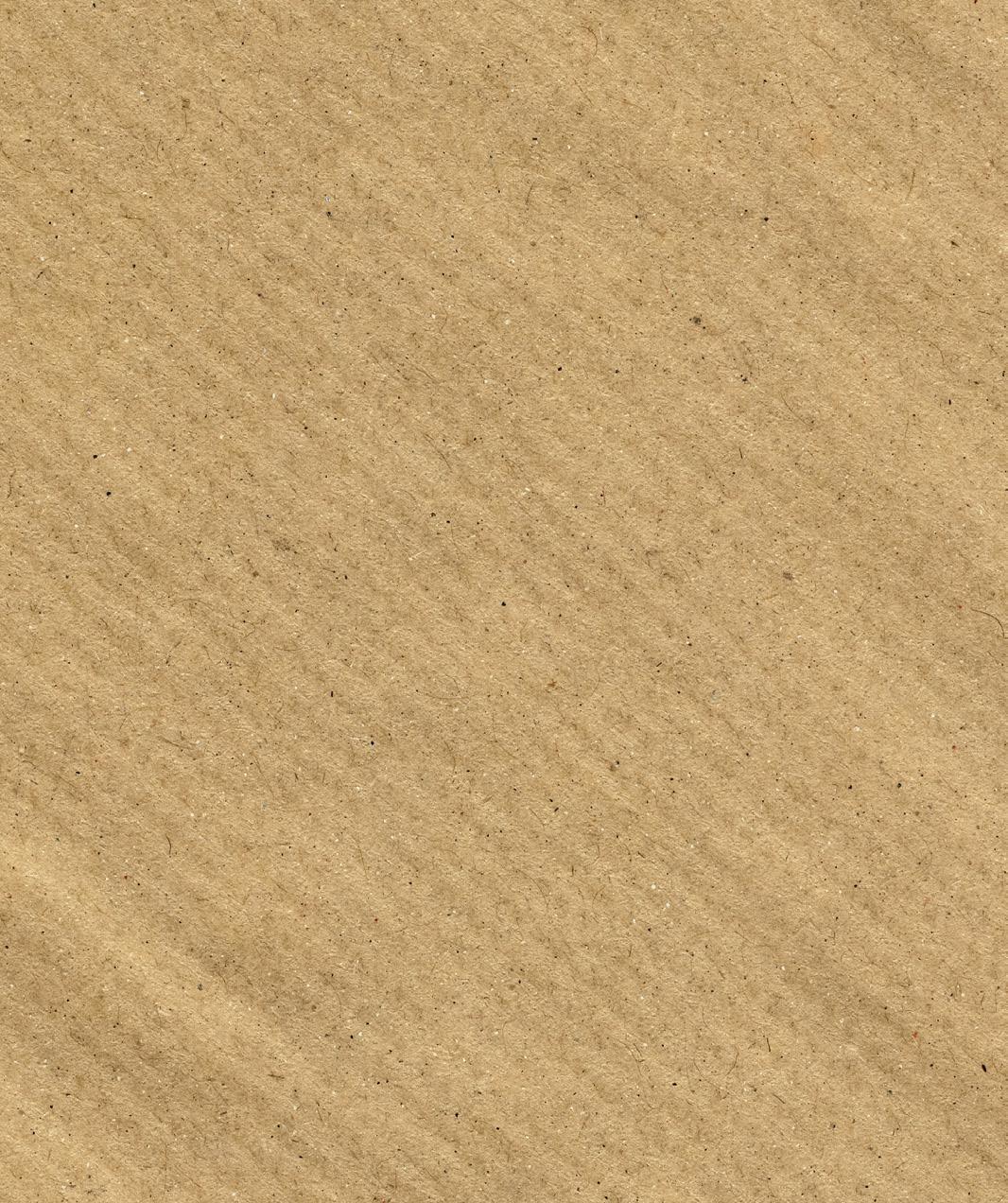





1. Manuscript sound 7
The origins of Western music • Monophony • Polyphony • Vocabulary • The birth of a new era • The instrumental music • Religious vocal music • Secular vocal music • European schools • Vocabulary • Sing in English: Twist and shout • The final challenge: Guilds in the Middle Ages
2. We treat treaties .................................. 15
Baroque music • Instrumental music of the Baroque period • Secular vocal music • Religious vocal music • Vocabulary • The golden age of music • Characteristics of Classical music • Classical instrumental music • Classical vocal music • Main Baroque composers • Main Classical composers • Vocabulary • Sing in English: Merry Christmas • The final challenge: My first opera
3.

1 MANUSCRIPT SOUNDS

What do you know about Guilds in the Middle Ages?

SCAN THIS CODE TO CONSULT THE GLOSSARY

Monophony

MUSIC IN THE MIDDLE AGES
The apparance of music notation

European schools
RENAISSANCE MUSIC
Vocal music
Religious forms Secular forms
Instrumental music
Musical instruments families
Gregorian chant
Troubadours and jongleurs
Ars Antiqua
Ars Nova
Franco-Flemish
sacred music
secular music
organum, conductus, motet
motet, canon, ballad, chason polyphonic, uses imitation and there is equality between all voices
austere and expressive compositions

in Rome, religious music with a sober, simple and clear style; in Venice, development of the polychoral style
FOCUS ON E N GLISH
Listen and repeat
mass and motet
madrigal, lied, romance, ensalada, villancico

Listen and repeat the words to improve your pronunciation.
Writing
The word root refers to the origins of something, but you can also find it when describing the parts of a plant: root, stem, leaf, flower, etc. Do you think the two meanings have something in common?
Music in the Middle Ages 1

The origins of Western music
Music is as old as humankind and has accompanied us since our very origins.
Music began as imitation of sounds found in nature and the reproduction of the rhythmic sounds and monotones from day-to-day activities.
We know little about primitive music. Thanks to archeology we do know that music was present in religious acts and rituals. Music was also thought to have magical or healing powers.
In the great ancient civilisations, such as Egypt and Mesopotamia, music was thought to have divine origins and was linked with religion. Chant frequently accompanied by instruments, formed part of both religious and civil ceremonies.

The basis of Western music can be found in the Ancient Greek civilisation. Music was greatly developed in Greece (800 BC-146 BC) and it was an art form linked to poetry and theatre.
The Greeks wrote the first music treatises. They created a new music order based on the use of modes and a rough music notation system.
Monophony
Monophony is a combination of sounds that make a melody. It is a single part or voice in which no other sounds are heard at the same time.
Religious monophony: Gregorian chant
Gregorian chant is sacred music which is sung a cappella, that is, all the singers in a choir of monks sing the same melody without accompaniment.
The goal of this chant was to teach the word of God to the faithful, therefore the text was more important than the music. Latin was the language used in these chants and the rhythm depended on the text.
Secular monophony: the troubadours and jongleurs
Secular music was developed outside monasteries and sung by troubadours and jongleurs, accompanied by musical instruments such as the lute. These compositions had varied themes related to the interests of day-to-day life.
The troubadours were educated artists, poets or musicians and, in some cases, from noble families.
Conversely, jongleurs were musicians and actors from poor families who played songs composed by troubadours.
The appearance of music notation
Music notation was created in the Middle Ages. In monasteries, scribes began to draw symbols over the texts to help monks remember the melody. These symbols are called neumes. Neumes evolved into a more clear square-shaped symbol. These symbols indicated the pitch of each sound and evolved into square notation.
Polyphony
The birth of polyphony is a result of the evolution of Gregorian chant. Musicians began to introduce a second voice that gave more depth to the religious chant.
Polyphony is characterised by the combination of different sounds and melodies played or sung at the same time.
There are two periods in its development: Ars Antiqua and Ars Nova.
Ars Antigua (12th and 13th centuries)
During Ars Antiqua (12th and 13th centuries), the first form of polyphony was developed: organum. Other forms of the Ars antiqua were the conductus and the motet.
The most relevant composers of Ars Antiqua were Léonin and Pérotin from the Notre-Dame school in Paris.
Ars Nova (14th century)
In this period, polyphonic music was perfected and became more complex in its rhythms and melodies.
During the 14th century, society began a slow progression towards the secular. As the middle class flourished, the popularity of the Church began to decline. For this reason, secular music became more important than religious music.
The most common musical form was the motet, which differed from the one used during Ars Antiqua: it became more complex at a rhythmic and melodic level and in many cases combined secular and religious texts together.
Other forms of Ars nova were the canon, the ballad and the chanson.
The most representative composers of Ars Nova were Guillaume de Machaut and Francesco Landini.

1 Indicate what a cappella singing means in Gregorian chant.
2 Writing. Use the Internet to find information about who Gregorian chant is named after.
3 Speaking. Identify the rhythmic differences between Gregorian chant and secular music performed by troubadours.
Vocabulary
Ars Antiqua, Ars Nova, Conductus, Gregorian chant, Middle Ages, Monophony, Motet, Music notation, Neumatic notation, Organum, Polyphony, Trovadours.
Square notation. Miniature choir book page. Monastery of Guadalupe, Cáceres.
Music in the Renaissance 2

The birth of a new era
Great transformations in the 15th century gave rise to a new era: the Renaissance. There was a “rebirth” of ancient Greek and Roman’ ideas. An intellectual and cultural movement called humanism developed. This was based on human beings being the centre of the universe, leaving medieval theocentric ideas behind.
Music was very important and developed a lot during this period. It was used as a vehicle to spread information at important events and in public acts.
The musical Renaissance began in what we know today as the Netherlands, and spread to France, Italy, Germany and Spain until it became an international style.
These are the main characteristics of Renaissance music:
• It is polyphonic, which means that there are always many voices.
• There is always an equilibrium between the voices. One voice is never emphasised over another.
• Rhythm is regular and beats softly, except in dances.
• Lyrics are very important and the music is used to emphasise them.
The instrumental music
In the Renaissance, instruments began to be more important and compositions of purely instrumental music began to appear. One important type of instrumental music was the dance; ballroom dancing was very popular in this period. Typical dances were the pavane and the galliard amongst others.
Other types of instrumental compositions were the musical compositions developed from vocal music such as the tiento, the canzona and the ricercar; the variations, the improvisations, etc.
Classifying instruments into families emerged at this time. Below are some of the most representative ones:
4 Describe the differences between monophony and polyphony.
5 Speaking. Make a diagram of medieval music with a classmate and explain it to the class.








Religious vocal music
The two greatest forms of Catholic religious music are the mass and the motet.
• The mass is a form of music based on the union of sacred texts that use eucharistic liturgies.
• The motet is a polyphonic composition without accompaniment.
The Protestant Reformation and the Counter-Reformation in music
A separation of Protestants from the Catholic Church brought with it a series of changes. These changes affected music and caused the Catholic Church to create new norms.
The Lutheran Reformation brought several changes to music:
The language of songs Polyphony Religious music
Protestant Reformation German, so that the text could be understood by the faithful.
Catholic counterreformation
The use of Latin. Simplification of songs, so the lyrics are understandable. Elimination of any melody with a secular theme.
Secular vocal music
During the Renaissance, secular music became more important, especially because of humanistic ideas based on the importance and value of humans.
The most important form was the madrigal, which began in Italy and is a form of polyphony of four or five voices. It is normally sung a cappella, although it sometimes has instrumental accompaniment. Other forms of secular music that developed in Europe are the chanson, from France; the lied from Germany; and the romance, the ensalada and the villancico from Spain.

In 1455, Johannes Gutenberg invented the printing press. Before, medieval copiers had to transcribe music compositions by hand. The invention of the printing press allowed music to be published and spread more widely. The invention of the printing press

During the Renaissance, polyphony and, therefore, choral singing gained importance.
6 Writing. The word ‘press’ has several meanings. Some of them keep a relationship with the printing press, which was invented by Gutenberg. For example, you can read the press every day on the Internet or you can work in a press agency. Find more meanings of ‘press’ in the dictionary and make sentences.

European schools
The Franco-Flemish school
These are the main characteristics of their music:
• It is polyphonic music, normally for four voices and without instrumental accompaniment.
• Imitation is used, some voices repeat or imitate others. This type of polyphony is called imitative counterpoint.
• There is an equilibrium between all of the voices, none stands out over the others.
A few important composers from this school were Guillaume Dufay and Josquin des Prés.
The Spanish school
Spanish music of the Renaissance is dominated by the spirit of the Counter-Reformation: the compositions were plain and expressive and were known for their simplicity.
One of the most well-known composers of religious music is Tomás Luis de Victoria. The main composer of secular music in this period was Juan del Encina.
The Italian school
In Italy, during the 16th century, Rome and Venice were the two most important musical centres of Europe.
In Rome, music was influenced by the dictates of the Council of Trent. Compositions were exclusively religious and the style was sombre, simple and clear. The main composers were Giovanni Pierluigi da Palestrina and Orlando di Lasso.
In Venice, the polychoral style was very important; it used various different choirs in the same work. The main composers were Andrea Gabrieli and his nephew Giovanni Gabrieli.

7 Writing. In your notebook, make an outline of the principal musical forms of the Renaissance, including both religious and secular examples. Include some of their characteristics.
8 Speaking. Write a brief summary about the characteristics of the Renaissance in art and share it with your classmates.
Vocabulary
Canzona, Counter-Reformation, Imitative counterpoint, Lied, Lutheran Reformation, Madrigal, Mass, Pavane, Polychoralism, Printing press, Renaissance, Ricercar, Romance, Tiento.
Architecture of the Counter-Reformation was characterised, as with music, by austere forms of great simplicity. Antigua Casa Lonja in Sevilla, today known as the Archive of the Indies (1572).
Twist and shout
This song was composed by Phil Medley and Bert Russell. A version performed by The Beatles made it world famous.
Voice
Recorder

The final challenge
GUILDS IN THE MIDDLE AGES
In the Middle Ages, musicians, artists and traders gathered together in groups called guilds.

SCAN THIS CODE TO CONSULT THE GLOSSARY FOR THIS UNIT.
Work in groups. Complete the following activities to find out more about the guilds in the Middle Ages.
STEP 1
Find information
Use the Internet to find information about guilds. Answer the following questions:
1. What is a guild?
2. What were they in charge of?
3. What types of guilds existed?
4. Why were guilds so important?
5. Do you think today something similar to guilds exists?
6. What guilds still exist today?

STEP 3
Share together
Think what guild would you belong to if you lived in the Middle Ages. Share with your classmates.

STEP 2
Match guilds to their description
Match the following guilds to their description below: ‘instrument makers’ and ‘maestro singers’.
a) In the Middle Ages, especially in the late Middle Ages, instruments were made in two ways: from one or two or pieces of wood, either using one type of wood or two types.

b) In the Middle Ages, members of this guild gathered to judge the performances of other members of the guild. Members of this guild should play their own songs, they should not only be able to sing (or play), but also compose.

2 WE TREAT TREATIES

Religious forms
Vocal music
BAROQUE MUSIC
Secular forms
Types of composition
Instrumental music
Vocal music
CLASSICAL MUSIC
Religious forms
Secular forms
Types of composition
Instrumental music

Do you know that there are many sounds in our environment that help tell stories?

SCAN THIS CODE TO CONSULT THE GLOSSARY
oratorio, cantata opera, cantata

oratorio, mass suite, sonata, concerto

bowed string instruments and the harpsichord play on important role
opera seria, opera buffa
symphony, sonata, concerto

instruments: bowed string, wind and percussion; birth of the classical orchestra
FOCUS ON E N GLISH
Listen and repeat
Listen and repeat the words to improve your pronunciation.
Reading
Every region of the planet uses musical instruments, many of which originated in ancient times. In groups, investigate the origin of the name of the symphonic instruments that we use today.
Baroque music 1

Baroque music
The Baroque period is an artistic period that developed during the 17th century and the first half of the 18th century.
In the courts of Europe music became the protagonist of big social events. Each country adopted a national music identity and gave up the international style of the Renaissance. Kings, nobility and the Church became patrons of the best composers.
The main characteristics of Baroque music are the following:
• The use of the technique called basso continuo, which is the use of a bass line over which chords are built up. The harpsichord, organ or lute were used to play the basso continuo.
• The use of accompanied melodies. The voice or an instrument played the main melody while other instruments played the accompaniment.
• The use of contrasts in different elements of music: in the rhythm, in the tempo of each movement, or within the melodies.
Instrumental music of the Baroque period
Instrumental music experienced a great progress and achieved total independence from vocal music. These developments were due to the technical evolution of instruments and the birth of the Baroque orchestra.
The most important music forms of the Baroque era were the suite, the sonata and the concerto.
Instrumental forms Structure Instruments
Suite Several dances with different rhythms and characters but with the same tonality.
Sonata 4 movements: slow-fast-slow-fast.
Concerto 3 movements: fast-slow-fast.
Solo instrument or for the full orchestra.
One or more solo instruments and orchestra, and basso continuo.
One or more solo instruments and orchestra.
The Baroque orchestra
The Baroque orchestra contained bowed string instruments and other instruments that played the basso continuo such as the harpsichord. Also woodwind, brass instruments or percussion instruments were included, depending on the function of each specific composition.
1 Speaking. In music, the word ‘movement’ is used to designate each of the parts into which a musical work such as a sonata or a concert is divided.
In which other situations can you use the word ‘movement’?

Secular vocal music
Secular vocal music of the Baroque era was very important to the monarchy. Kings displayed their power through music.
The opera sprang from the combination of theatre, literature and music, and is considered a music form of international importance.
The most representative composer of Baroque Italian opera in the 17th century is Claudio Monteverdi. Other Baroque composers of operas were the English Henry Purcell and the German-born English composer George F. Handel.
The main characteristics of Baroque opera are the following:
• Overture: instrumental part that serves as an introduction.
• Sung parts: played by solo instruments and chorus. Can be arias or recitatives.
• Interlude: instrumental parts between the different sections of an opera.
Religious vocal music
The Catholic Church kept Renaissance music forms that already were established such as the mass and the motet, and created new ones like the oratorio and the cantata.
The cantata
The cantata is a vocal music form based on religious or secular text which uses solos, orchestra and choruses. Cantatas do not narrate a story, which is why they are different from an oratorio.
The oratorio
The oratorio is a vocal music form with narrative character that is based on texts from the Bible and is not acted out. Its structure is similar to an opera, but it is different in the sense that the characters do not act, they only sing.

2 Writing. In your notebook, make an outline of the main forms of vocal music in the Baroque era. Include religious and secular forms and a description of each.
Vocabulary
Accompanied melodies, Aria, Baroque, Basso continuo, Cantata, Concerto, Interlude, Oberture, Opera, Oratorio, Orchestra, Recitative, Sonata, Suite.
The Florentine Camerata
The Florentine Camerata, also known as Camerata de’ Bardi, was a group of intellectual nobles and artists who met to discuss topics related to literature, music and art. At these meetings, they discovered theatrical representations in ancient Greece were sung, and they decided to imitate them: they chose a mythological topic, they wrote the text and composed the music. This is how opera originated.
Classical music 2

The golden age of music
The classical period is an artistic period that spanned the second half of the 18th century and the first decades of the 19th century. It was called the ‘Century of Light’. The Enlightenment occurred during this time; this was a philosophical movement that influenced composers of the period, who used their music to express ideas of order, proportion, balance and beauty.
The bourgeoisie, made up of liberal professionals and businessmen, gained importance during the 18th century. Musicians found in them a new audience, culturally prepared to value their compositions.
The growth of an understanding audience encouraged the appearance of the public concert. Music became available to a wider public and no longer only for a collective minority, such as the nobility or the Church.
Characteristics of Classical music
The main characteristics of Classical music are the following:
• The use of basso continuo disappeared and in its place repeated chords and arpeggios were used.
• The rhythm of the accompaniment is not as marked as in Baroque music. It is more smooth and natural.
• The melody is the main element and stands out over the other elements of the musical composition.
• The compositions are balanced and of precise proportions. Nothing is excessive.
• Previous forms, such as the sonata, were perfected and new ones, such as the symphony, were created.

Did you know?
The word ‘burgeoisie’ derives from the French word bourgeoisie that refers to the inhabitants of the villages in medieval times.
The burg was the area of the village where the professionals, such as artisans and merchants, lived.
3 Speaking. Explain one of the reasons why the public concert emerged in the Classical period.
4 Writing. In your notebook, make a chart of the main musical forms of the Classical period and their characteristics.
During the Classical period, musicians continued to compose for the aristocracy, but they found a new audience in the bourgeoisie.
Classical instrumental music
During the Classical period, instrumental music continued the process of independence from vocal music already initiated during the Baroque period. Instrumental compositions reflected the spirit of the Enlightenment. Their melodies were clearer, more balanced and less ornamented than the ones from the Baroque period.
Some instruments, such as the harpsichord, were no longer used. Other instruments, such as the French horn and clarinet, became more important. The piano is the instrument that rises in importance in this period.
The most representative forms of instrumental music were the sonata, the symphony and the concerto.
Sonata 3 movements: fast-slow-fast. One or two solo instruments.
Symphony 4 movements: fast-slow-moderato-fast. Orchestra.
Concerto 3 movements: fast-slow-fast. Orchestra and a solo instrument.
Classical vocal music
The opera was still the most important genre within secular vocal music. However, during the Classical period the topics were more familiar to common people and the music was simpler and easier to understand. This kind of opera is called opera buffa or comic opera and was created in opposition to opera seria, which was more aristocratic and less popular.
Regarding religious vocal music, the mass and the oratorio from the Baroque period continued to be used and developed.
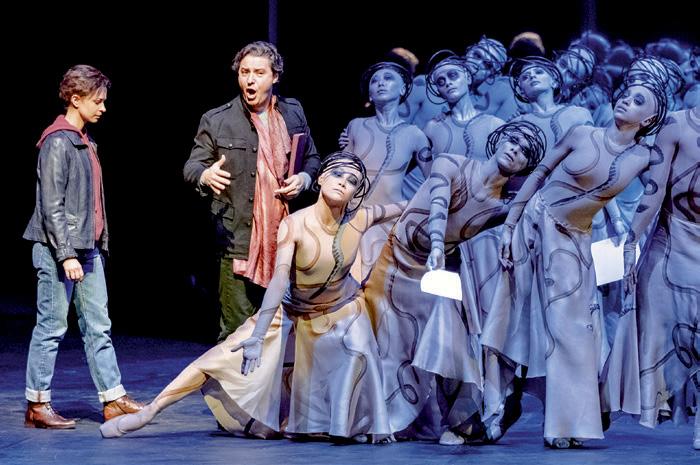
Chamber music
The name ‘chamber music’ came from the time when music was played in small rooms called chambers. Usually they were the private rooms of a noble, king or important church official.
Today, chamber music is a form of music that is composed for a small group of instruments. The most frequently used ensemble for chamber music is the string quartet (two violins, one viola, and one cello).
5 Name one difference between the sonata and the concerto.
6 Writing . Identify the type of opera that appeared in the Classical period and describe how it differed from opera seria.
Vocabulary
Aristocratic, Arpeggio, Bourgeoisie, Chamber music, Chord, Clarinet, Classicism, French horn, Harpsichord, Piano, Symphony.
Opera combined the human voice, the orchestra and the special effects available at the time. In the picture, a scene from The Marriage of Figaro by W. A. Mozart.
Composers of Baroque and Classical music 3

Main Baroque composers



Antonio Vivaldi (1678-1741)
Vivaldi was a great composer of instrumental music. He composed more than five hundred concertos for solo instruments. He was very influential for composers of the era and afterwards.
Johann Sebastian Bach (1685–1750)
Bach is considered the great figure of the Baroque era. He was a German composer and organist who created both instrumental music (sonatas, suites, and concertos) and vocal music (masses, cantatas, motets, chorales).
Georg Friedrich Handel (1685-1759)
Handel is a composer originally from Germany but spent the most of his career in England. He composed operas, suites and concertos.
Main Classical composers



Joseph Haydn (1732-1809)
He was a composer and conductor from Austria. Haydn is considered to be the father of the symphony, the sonata and the string quartet. Although these music forms existed before, he successfully consolidated and developed them.
Wolfgang Amadeus Mozart (1756-1791)
He was a composer born in Salzburg (Austria). Despite his short life, Mozart composed an enormous amount of musical works of all genres and usical forms: symphonies, quartets, concertos, and operas.
Ludwig van Beethoven (1770-1827)
Beethoven was a German composer and pianist born in Bonn. He created vocal and instrumental compositions. At the beginning of the 19th century he started to lose his hearing. As he grew older, his deafness began to reduce his creative capacity.
Barbara Strozzi (1619-1677)
She was born in Venice (Italy). As well as a composer, she was a soprano singer and lute player. She is considered the greatest composer of cantatas of the entire Baroque period.
Maria Theresia von Paradis (1759-1824)
Born in Vienna (Austria). She went blind at three years old, but became an excellent pianist, singer and songwriter. She founded a music school in Vienna and taught classes for women. She composed several operas such as Rinaldo Alcina, Ariadne and Bacchus, concertos for piano and orchestra and works for chamber.
7 Writing. Use the Internet to find more information about these composers and, in your notebook, write the titles of their most famous works.
Merry Christmas
This song is a popular traditional carol that comes from the south-west of England back in the 16th century. It is, without a doubt, one of the most sung Christmas songs.
We wish you a Merry Christmas; we wish you a Merry Christmas; we wish you a Merry Christmas and a Happy New Year.
Good tidings we bring to you and your kin: Good tidings for Christmas and a Happy New Year. Oh, bring us some figgy pudding; oh, bring us some figgy pudding; oh, bring us some figgy pudding and a cup of good cheer.

The final challenge
MY FIRST OPERA
Can you imagine telling a joke without using noises, onomatopoeias or any kind of sound effect? Sound effects accompany a story when noises or sounds in a scene are needed to tell the story.
Work in groups. Complete the following activities to create a collection of sound effects.
STEP 1
Create different effects
Form different groups. Each group will make a collection of sound effects. Look at the following examples:
a) The croak of a frog: use a pen or pencil to stroke the wire on a notebook.
b) Wood squeaking: slowly twist a plastic cup.
c) Door squeaking: onomatopoeia using your voice.
d) Fire: slowly crinkle tape.
Use sounds you make with your mouth, vowels and other body percussion sounds. You can also use musical instruments to create sound effects.

Narrate the story
Perform the story for your classmates using sound effects and instruments just as you practised. Listen carefully to other groups as they perform.
Explain to your classmates the sound effects you used and how they were made.
Create a story

SCAN THIS CODE TO CONSULT THE GLOSSARY FOR THIS UNIT.
STEP 2
You will read the beginning of a story that each group will then complete by themselves. Write the complete story in a notebook.
Think about the sound effects needed in each moment of the story. Write them down in the margins of your notebook next to the text.
Practise the story with sound effects, using musical instruments. It can be organized like a play. Some classmates can be actors and others can be in charge of the sound effects.

STEP 3

Manuscript sounds

The origins of Western music
Music is as old as humankind and has accompanied us since our very origins.
Origins
Great ancient civilisations
Western music

Music notation
Music notation was created in the Middle Ages. In monasterios scribes began to draw symbols over the texts to help monks remember the melody.
The Ancient Greek civilisation
Imitation of sounds found in nature
Reproduction of the rhythmic sounds from day-to-day activities
Music has divine origins
800 BC – 146 BC
Art form linked to poetry and theatre
They wrote the first music treatises
Music based on the use of modes
They created a music notation system
The birth of music notation
Music notation
Types of music notation
Symbols to help monks remember melodies

Monophony
Monophony is a combination of sounds that make a melody. It is a single part or voice in which no other sounds are heard at the same time.

Monophony features
Religious monophony
Gregorian chant
Secular monophony
Performers
Performers Instruments Instruments
Choir of monks
A capella without accompaniment
Troubadours and jongleurs
Accompanied by musical instruments
Polyphony
Polyphony is characterised by the combination of different sounds and melodies played or sung at the same time. The birth of polyphony is a result of the evolution of Gregorian chant.


Polyphonic musical forms

Organum
Conductus
Reinassance music
Music was very important and developed a lot during this period. It was used as a vehicle to spread information at important events and in public acts.

Reinassance music
It is polyphonic music
There is equality between the voices
The rhythm is regular
It has multiple voices
No voice stands out above the others
It is gently marked except in dances
The lyrics are very important
The music is used to draw attention to them
Reinassance instruments
In the Renaissance, instruments began to be more important and compositions of purely instrumental music began to appear.
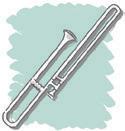

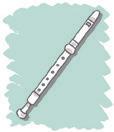






Vocal forms
During the Renaissance, secular music became more important, especially because of humanistic ideas based on the importance and value of humans. In religious music, the separation of Protestants from the Catholic Church brought with it a series of changes that affected music.
Secular
Italy Germany France Spain

Religious
Protestant Reformation and Catholic Counter-Reformation
Madrigal Romance Ensalada Mass Villancico Motet Lied Chason
International style
The musical Renaissance began in what we know today as the Netherlands, and spread to France, Italy, Germany and Spain until it became an international style.
Franco-Flemish
Spanish
European schools
Italian
Polyphonic, uses imitation and there is equality between all voices
Austere and expressive compositions
In Rome, religious music with a sober, simple and clear style
In Venice, development of the polychoral style
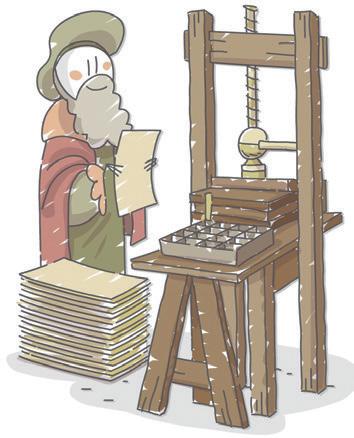
We treat treaties 2

Baroque music
The Baroque period is an artistic period that developed during the 17 th century and the first half of the 18 th century.
Main characteristics
Basso continuo technique
Accompanied melody
Use of contrasts
Instrumental music
The most important music forms of the Baroque era were the suite, the sonata and the concerto.
Use of a bass line over which the chords are played

One voice or instrument performs the main melody, and the others, the accompaniment
Contrasts in all elements of the music: rhythm, tempo, melody

Instrumental music
Suite
Various movements of different rhythm, although in the same key
Solo instrument or an orchestra
4 movements: slow-fast-slow-fast
One or two solo instruments and an orchestra, and basso continuo
Concerto
3 movements: fast-slow-fast
One or many different solo instruments and an orchestra
Secular vocal music
The most important secular vocal form is the opera.
Instrumental part that serves as an introduction
Is a dramatic work with music, in which the actors speak through singing and are accompanied by an orchestra
Religious vocal music
New religious vocal forms like the oratorio and the cantata emerged.
Played by solo instruments and chorus; can be arias or recitatives
Religious vocal music OPERA
Based on texts from the Bible and not acted outs; its structure is similar to an opera
Main Baroque composers



Instrumental parts between the different parts of an opera
Based on religious or secular text which uses solos, orchestra and choruses; doesn’t narrate a story

Classical music
The Classic period is an artistic period that developed during the second half of the 18 th century and the first decades of the 19 th century.
Main characteristics

Instrumental music
The most representative forms of instrumental music were the sonata, the symphony and the concerto.
3 movements: fast-slow-fast
One or two solo instruments
Disappearance of the basso continuo
Smooth, regular and natural rhythm
The melody is central
Melody accompanied by repeating chord progressions, arpeggios…
Rhythm not as marked as in Baroque music
Balance in compositions
Renewal of musical forms
Prevalence of symmetry in compositions
No single musical element stands out excessively
Previous forms were perfected and new ones created
Instrumental music

4 movements: fast-slow-moderato-fast
3 movements: fast-slow-fast
Orchestra and a solo instrument
Vocal music
Opera, mass and oratorio continued to be the most practiced musical forms.
Classical vocal music
Secular
Main Classical composers
Religious



© This edition: GRUPO
All rights reserved. No part of this publication may be reproduced, stored in a retrieval system, or transmitted, in any form or by any means, electronic, mechanical, photocopying, recording, or otherwise, without the prior permission of the publishers.
ANAYA, S.A., 2024 - Valentín Beato, 21 - 28037 Madrid - Printed in Spain.